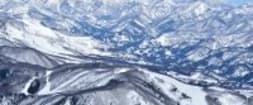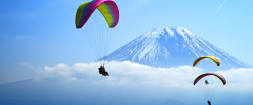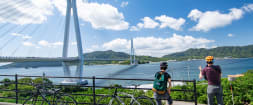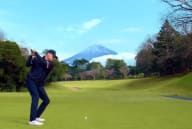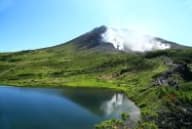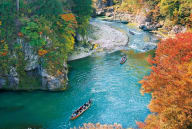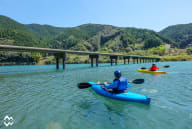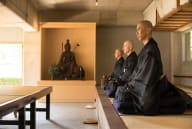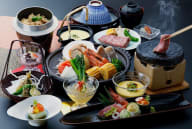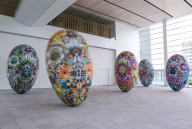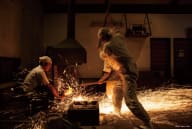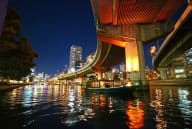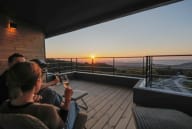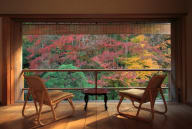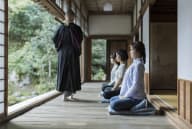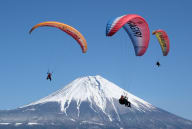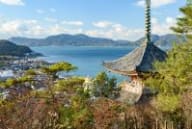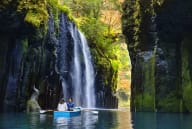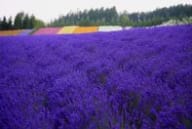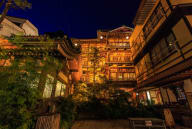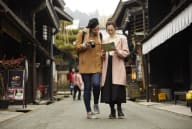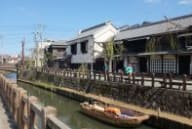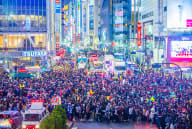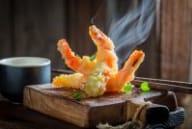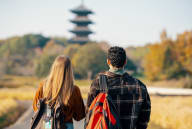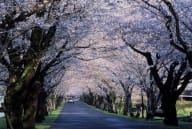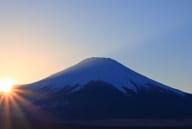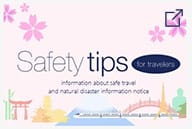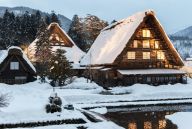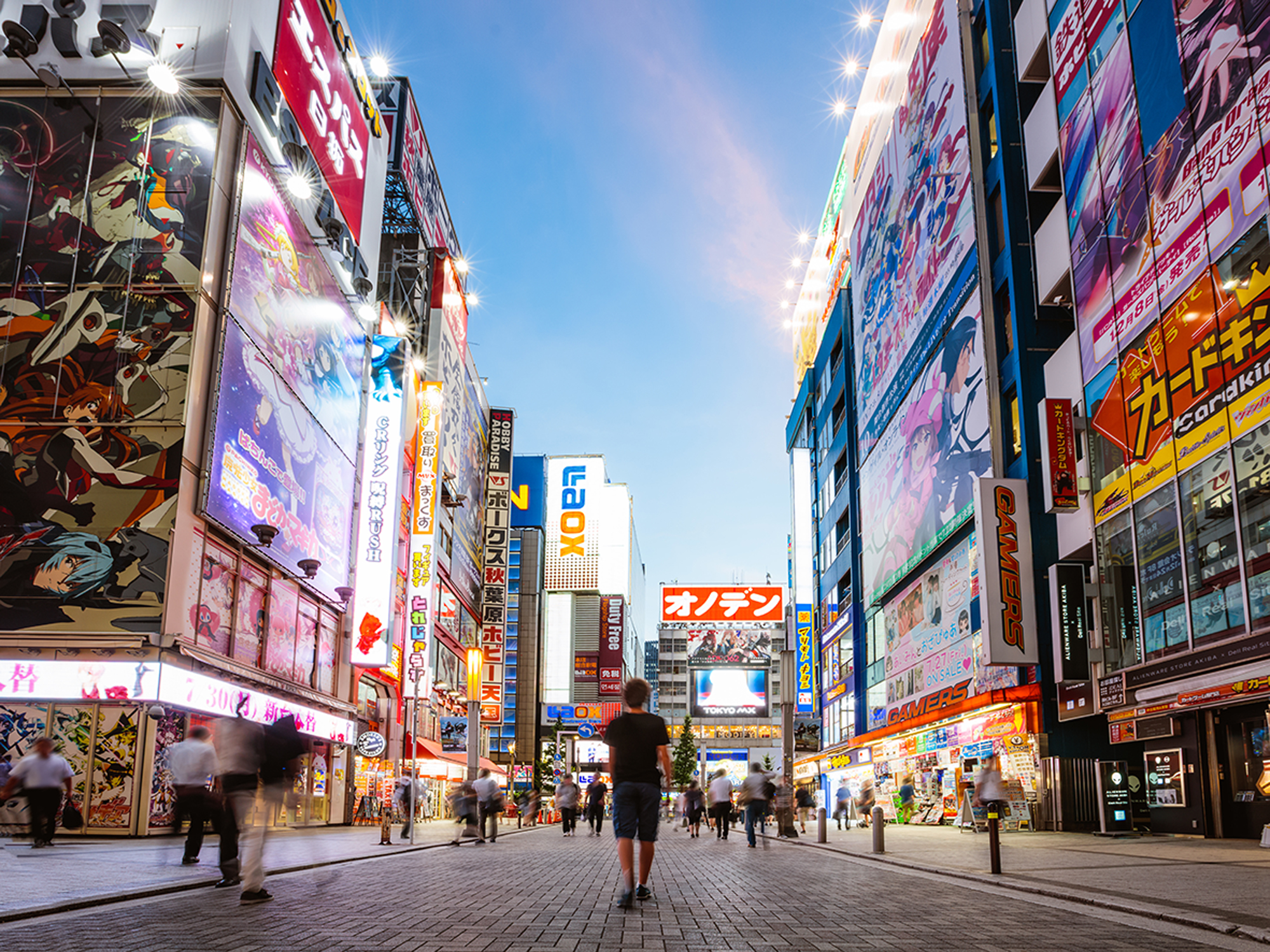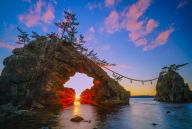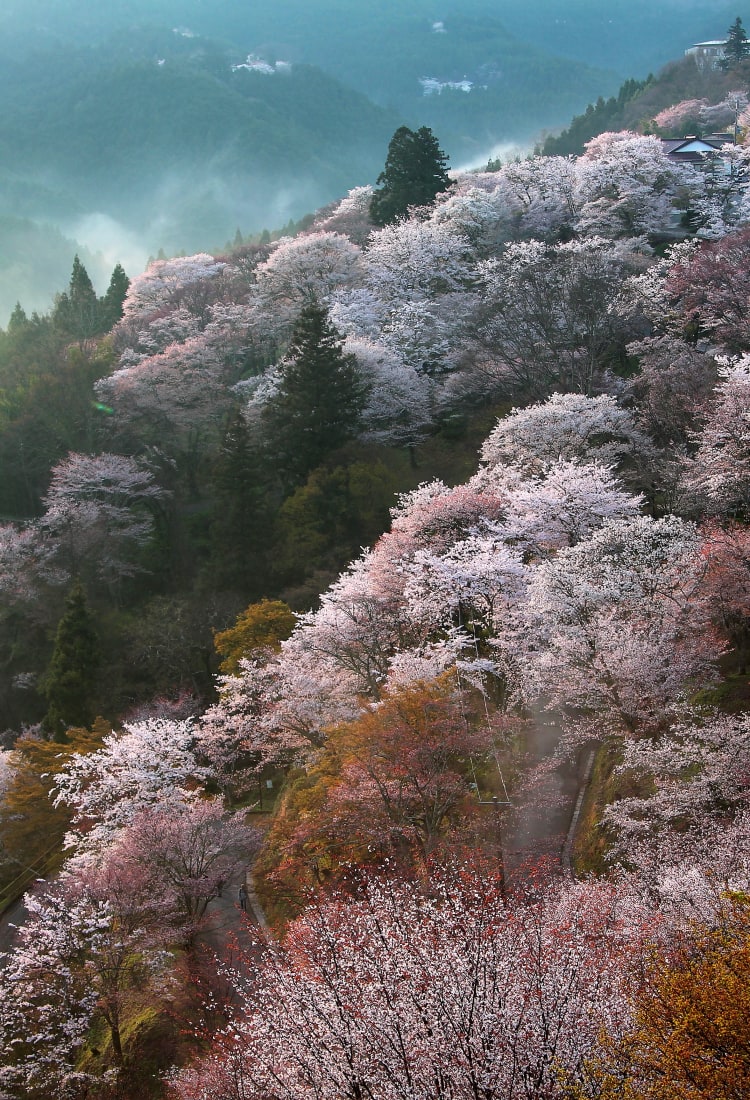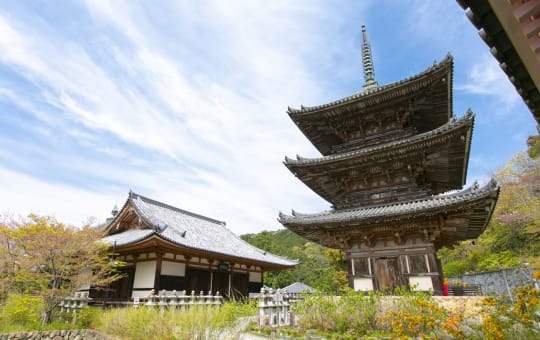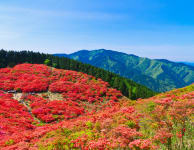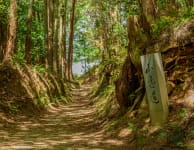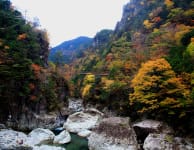Yoshino's centerpiece is the sacred Mt. Yoshino , a UNESCO World Heritage site whose extraordinary beauty is worthy of the many poems written about it throughout the centuries.
Don't Miss
- See the extraordinary display of about 30,000 cherry trees burst into color from late March through April
- Walk in the footsteps of ancient mountain ascetics
- Luxuriate in the area's mineral-rich hot springs
How to Get There
Although it is in Nara Prefecture , access to the Yoshino area is easiest from Kyoto Station . Alternatively, you can get to the Yoshino area from Osaka .
From Kyoto: At Kyoto Station, take the Kintetsu Line, which reaches Yoshino Station in about 1 hour 45 minutes.
From Osaka: From Abenohashi Station in Osaka, it takes 1 hour 25 minutes on the Kintetsu Minami Osaka Line to Yoshino Station.

Why Visit Yoshino? A Sacred Mountain Steeped in History and Nature
Much of Yoshino in Nara Prefecture is a sprawling national park, encompassing the sacred Kii mountain range, now a UNESCO World Heritage site. Its heart is Mt. Yoshino, which has long been a symbol of spring in Japan. The mountain is featured heavily in classical literature, poetry and song.
Spring in Yoshino: Explore One of Japan's Most Famous Cherry Blossom Mountains
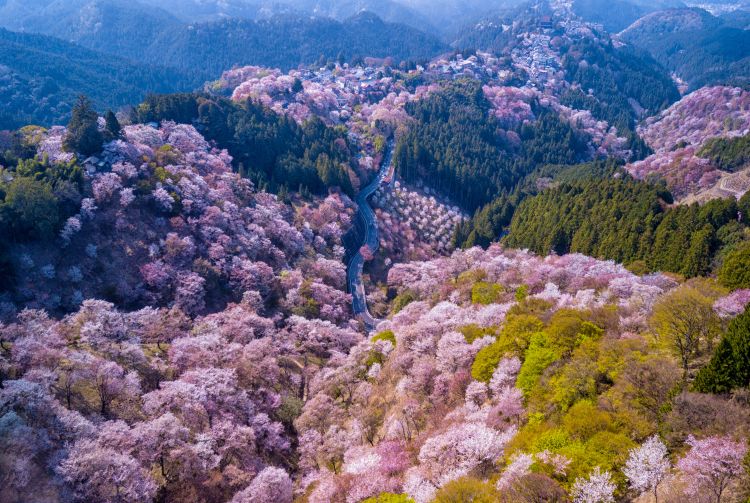
Yoshino's 30,000 cherry blossoms are a true sight to behold
In spring, Yoshino's ancient shrines and temples – many over 1,000 years old – are framed by the breathtaking bloom of about 30,000 iconic cherry trees . Notably, Yoshimizu-jinja Shrine offers prime views and is famed as the site where 16th-century warlord Toyotomi Hideyoshi once held a hanami (flower viewing) party perfectly timed to admire the blossoms.
Summer in Yoshino: Beat the Heat with Shady Mountain Paths and Historic Shrines
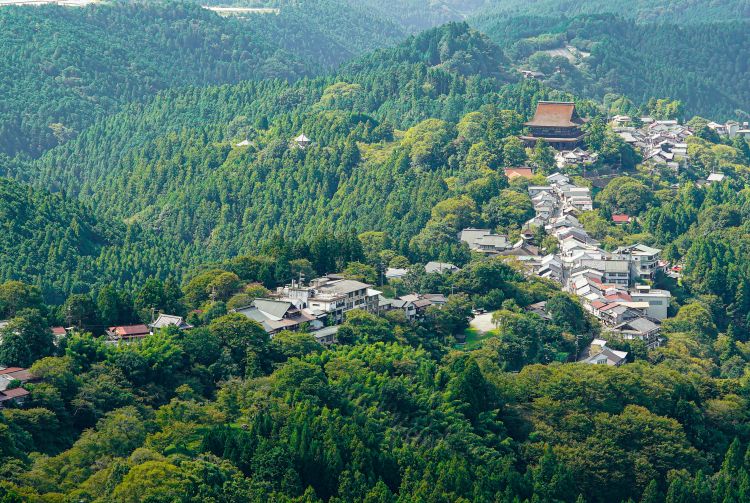
The summer greenery in Yoshino is fresh and vibrant, making it perfect for forest bathing and relaxing amidst nature
In summer, Yoshino's lush greenery surrounds historic sites like Nyoirinji Temple, which holds the mausoleum of Emperor Godaigo (1288-1339) – a pivotal figure in Japan's samurai era. Said to be the last emperor to wield real political power before the Meiji Restoration, Godaigo's dramatic story adds depth to your visit. The area also offers numerous hiking trails that weave through verdant forests and past ancient temples, making summer the perfect season to combine history with outdoor adventure.
Fall in Yoshino: Capture the Best Autumn Views
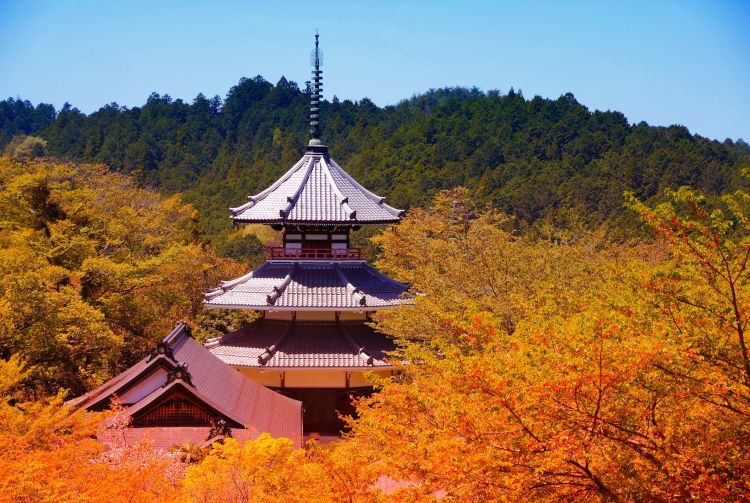
Fall in Yoshino offers yet more amazing photo opportunities
As autumn paints Yoshino in vibrant reds and golds, the legacy of Emperor Godaigo comes alive. Fleeing conflict, he established the Southern Court here to rival the Kyoto court under the shogun's rule. Nearby, Yoshino Jingu Shrine – dedicated to Godaigo – offers an impressive backdrop of fall foliage, making it a perfect spot to reflect on history amid nature's seasonal beauty.
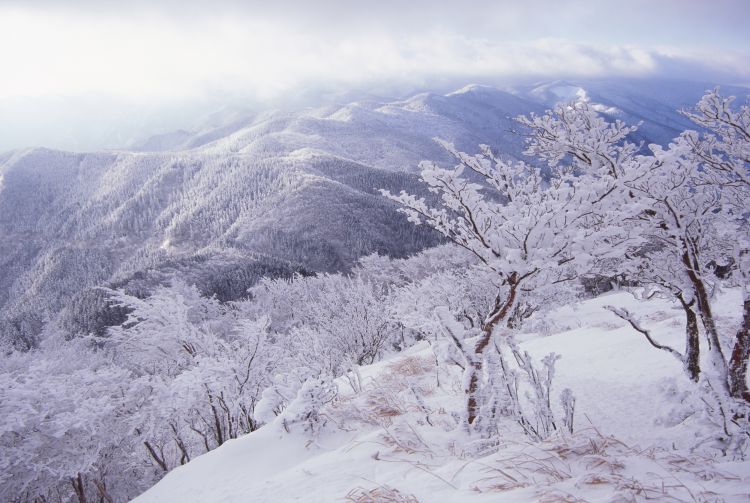
In winter snowfall blankets the mountains behind Nyoirin-ji Temple
Winter in Yoshino: Embrace the Quiet Season and Festive Setsubun
The quietest out of all the seasons, winter provides a welcome reprise from the crowds, and a rare chance to see the famous hilly landscapes carpeted in snow. In early February, the town comes alive with the local Oni Fest, a vibrant celebration of Setsubun, the traditional Japanese holiday that marks the start of spring. Costumed “oni” ogres parade through the streets, taiko drums echo through the night, and the dramatic Oni Odori dance unfolds inside Zao Do at Kinpusen-ji Temple . Traditional rituals like a fire ceremony and bean throwing add a spiritual touch to this vibrant seasonal event.
Spiritual Heritage and Scenic Trail Highlights in Yoshino
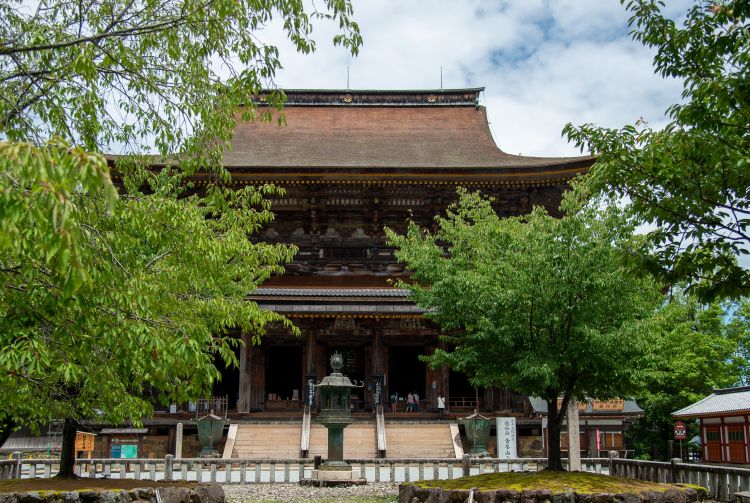
Kimpusen-ji Temple is a must-visit spiritual spot in the Yoshino area
Beyond the changing seasons, Yoshino's spiritual roots run deep. At the foot of Mt. Yoshino , the magnificent Zao-do Hall of Kimpusen-ji Temple stands as a testament to 8th-century ascetic En-no-Gyoja, the founder of Shugendo Japan's second-largest traditional wooden structure, the first being the Great Buddha Hall in Nara .

Keep an eye out for Shugendo monks in their eye-catching robes
Shugendo practitioners undertake rigorous ascetic rituals, including fasting and purification under icy waterfalls – a tradition still visible today as pilgrims in distinctive robes blow their conch shells while trekking the sacred trails. Exploring these paths offers a unique glimpse into Japan's ancient mountain worship and spiritual heritage, complementing the natural beauty of Yoshino throughout the year.
When Is the Best Time to Visit Yoshino for Hiking and Hot Springs?
Yoshino makes a great day trip from other cities in the Kansai area , but you may wish to stay overnight to make the most of the hot springs here. With dozens of trails, the Yoshino area is a haven for a combination of hiking and onsen soaks. The best way to beat the crowds in the cherry blossom season is to stay overnight and then see the blossoms in the early morning before the trains arrive.












